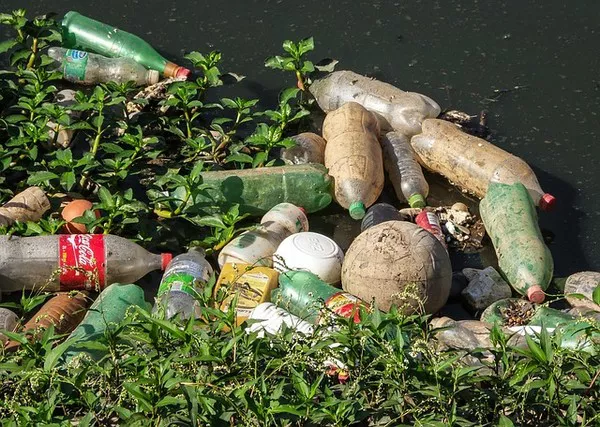In the pursuit of sustainable urban development and environmental conservation, the treatment of wastewater has become an integral part of modern infrastructure. Sewage Treatment Plants (STPs) play a pivotal role in ensuring the efficient removal of pollutants from wastewater before it is released back into the environment. This article delves into the intricacies of the STP plant process, elucidating its significance, components, and operational phases.
Significance of STP Plants
STP plants are crucial for maintaining ecological balance and safeguarding public health. The discharge of untreated sewage into water bodies can lead to the contamination of freshwater sources, endangering aquatic life and posing health hazards to human populations. STP plants mitigate these concerns by utilizing advanced treatment technologies that facilitate the removal of organic matter, nutrients, and harmful pathogens from wastewater. This not only protects the environment but also promotes the availability of clean water for various uses.
Key Components of STP Plants
An STP plant consists of several essential components that work synergistically to treat wastewater effectively:
1.Screening and Grit Removal: In the initial stage, the incoming sewage undergoes screening to remove large debris and particles. Grit chambers then separate sand, gravel, and other coarse materials from the wastewater.
2. Primary Treatment: During this phase, settled sewage undergoes sedimentation, allowing heavier particles to settle at the bottom as sludge. The partially treated water is separated from the sludge and further treated.
3. Secondary Treatment: Secondary treatment involves biological processes aimed at removing dissolved and suspended organic matter. Activated sludge systems, trickling filters, and rotating biological contactors are common methods employed in this phase. Microorganisms break down organic pollutants, producing a more refined effluent.
4. Tertiary Treatment: Tertiary treatment is the final step to ensure the removal of any residual impurities. It employs advanced techniques such as filtration, chemical precipitation, and disinfection to meet stringent water quality standards.
5. Sludge Treatment and Disposal: The sludge generated during the treatment process requires special attention. It is often subjected to processes like digestion, dewatering, and drying to reduce its volume and make it more manageable for disposal or beneficial reuse.
Operational Phases of an STP Plant
The STP plant process can be categorized into several operational phases:
1.Influent Collection and Screening: The treatment process commences with the collection of wastewater from various sources. The collected sewage undergoes screening to remove large objects and particles, preventing damage to downstream equipment.
2. Primary Treatment: In the primary treatment phase, settled sewage enters large sedimentation tanks, allowing solid particles to settle at the bottom as sludge. The partially treated water, or effluent, is decanted from the top.
3. Biological Treatment: The heart of the STP plant process lies in the biological treatment phase. This phase employs a combination of aerobic and anaerobic processes to break down organic matter present in the effluent. Microorganisms, including bacteria and protozoa, play a vital role in converting pollutants into harmless byproducts.
4. Secondary Clarification: After biological treatment, the mixture of microorganisms and treated water is transferred to secondary clarifiers. Here, the microorganisms settle, forming activated sludge at the bottom. The clear water above is sent for further treatment.
5. Tertiary Treatment: The treated water from secondary clarification may undergo tertiary treatment for an additional layer of purification. This phase employs advanced treatment methods like filtration, chemical coagulation, and disinfection to achieve the desired water quality standards.
6. Sludge Treatment: The sludge generated from primary and secondary clarification, as well as excess biological sludge, undergoes treatment to reduce its volume and stabilize its composition. Anaerobic digestion, mechanical dewatering, and thermal drying are common techniques employed for sludge treatment.
7. Effluent Discharge: The treated effluent, now meeting regulatory standards, is discharged into receiving water bodies or may be suitable for various non-potable reuse applications such as irrigation or industrial processes.
Challenges and Innovations
The STP plant process is not without its challenges. Rapid urbanization, increasing population, and the emergence of new contaminants pose a strain on existing treatment facilities. Moreover, the energy consumption associated with the treatment process and the management of sludge are ongoing concerns.
Innovations are addressing these challenges by incorporating energy-efficient technologies, optimizing treatment processes, and exploring sustainable sludge management practices. Enhanced nutrient removal technologies, such as biological nutrient removal and membrane bioreactors, are being employed to combat nutrient pollution in water bodies.
Conclusion
Sewage Treatment Plants are integral to ensuring the health and sustainability of our communities and environment. The STP plant process involves a series of interrelated stages that collectively purify wastewater to meet stringent water quality standards. By employing a combination of physical, biological, and chemical processes, STP plants play a pivotal role in safeguarding water resources, promoting ecosystem health, and advancing sustainable urban development. As technology continues to advance, STP plants will evolve to meet the ever-growing demands of a changing world, ensuring that clean water remains accessible for generations to come.

